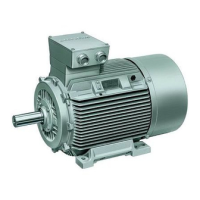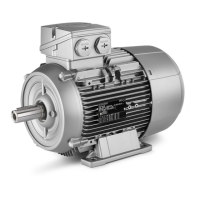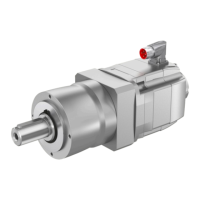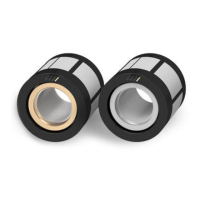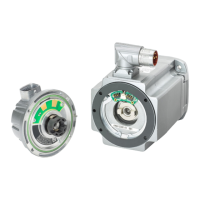Glossary
A5E01083943A AB
102 Siemens AG Operating Instructions 2.02 1FW4
Condensation water
Air always contains a percentage of water. The amount of water that the air can hold is
limited and depends on the air temperature. The warmer the air, the more water it can store.
Cold air stores very little water. Condensation water results from air being cooled by cold
surfaces. The condensation water accumulates at the lowest point of the machine housing.
There are drill holes here that are sealed with plastic plugs. The condensation water is
drained by removing the plastic plugs.
Connecting flange
Flanges are discs with drill holes at the end of a pipe. They are parts of the pipes. They
connect pipe sections to each other.
Cooling type IC416
Type of cooling. IC = International Cooling. The first identifying number specifies the type of
cooling circuit arrangement, the second identifying letter stands for the coolant and the third
identifying number designates the type of movement of the coolant. The fourth and fifth
characters stand for a second cooling circuit: EN 60 034-6:1993, DIN VDE 0530 Part 6:
1996.
Degree of protection
The degree of protection specifies both the suitability of electrical equipment for various
ambient conditions and the level of protection against potential hazards to personnel who are
using that equipment.
The protection type designation IP (International Protection) is followed by a 2-digit number.
The first number specifies the scope of protection of a housing with regard to touching and
ingress of foreign objects. The second number specifies the scope of protection of the
housing with regard to humidity: EN 60529: 1991
Draining the condensation water
If water has accumulated at the lowest point of the motor housing, it can drain out through a
special opening.
Drive end
The drive end is the end of the motor to which the shaft end connected to the driven machine
(drive end) is attached: DIN IEC 34 Part 7.
Driving element
Driving elements are couplings, belt pulleys, gear wheels on the shaft of the torque pick-up
element (driven machine) of a machine set.
Equipotential bonding
An electrically conductive connection is a type of equipotential bonding, which is meant to
prevent or at least reduce an electrical voltage between conductive components.
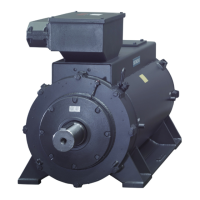
